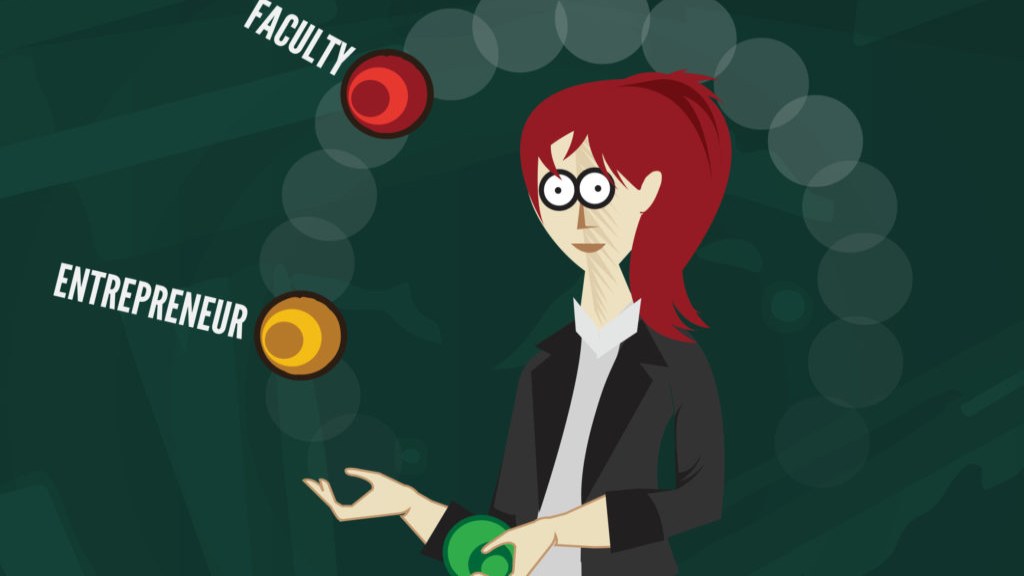Finding balance in your professional life and your dreams can be hard for anyone. Faculty in academia, hoping to become entrepreneur and start their own companies, find this especially difficult. Finding this balance is essential to having success both professionally and in entrepreneurial endeavors.
Amy J. Ko, a professor at the University of Washington Information School and Co-Founder of AnswerDash, said in a post on her Bits and Behavior blog that she found parallels between being an entrepreneur and being a professor that helped her start her technology company.
Parallels Between Startup Life and Faculty Life
Here are four parallels between startup life and faculty life that Ko found striking.
1. Fundraising.
“I spend a significant amount of my time seeking funding, carefully articulating problems with the status quo and how my ideas will solve these problems. The surface features of the work are different—in business, we pitch these ideas in slide decks, elevators, whereas in academia, we pitch them as NSF proposals and DARPA white papers—but the essence of the work is the same: it requires understanding the nature of a problem well enough that you can persuade someone to provide you resources to understand it more deeply and ultimately address it.”
2. Experimentation.
“Research requires a high degree of iteration and experimentation, driven by carefully formed hypotheses. Startups are no different. We are constantly generating hypotheses about our customers, our end users, our business plan, our value, and our technology, and conducting experiments to verify whether the choice we’ve made is a positive or negative one.”
3. Learning.
“Both academia and startups require a high degree of learning. As a professor, I’m constantly reading and learning about new discoveries and new technologies that will change the way I do my own research. As a founder, and particularly as a CTO, I find myself engaging in the same degree of constant learning, in an effort to perfect our product and our understanding of the value it provides.”
4. Teaching.
“The teaching I do as a CTO is comparable to the teaching I do as a Ph.D. advisor in that the skills I’m teaching are less about specific technologies or processes, and more about ways of thinking about and approaching problems.”
Ko also mentions the distinct differences between the two are the pace, the outcomes, and the consequences.
Finding Balance as a Professor and Entrepreneur
Alaina G. Levine, an award-winning entrepreneur, science journalist, and STEM careers consultant said in a blog post for Science Magazine that the key to success is to find ways to balance the two worlds.
“Issues of intellectual property ownership, human resources protocols, and time management, as well as the challenge of keeping a delineated barrier between professorial and business activities can be difficult to manage, but these concerns shouldn’t prevent academics from seeking to create a startup company,” Levine said in the blog post.
How to Balance Entrepreneurship and Faculty Responsibilities
According to Levine, these are a few things to consider before perusing entrepreneurship in order to successfully balance professorial and entrepreneurial activities:
1. Know your priorities
“If you are a professor who ponders whether your research can be developed into a technology that can be commercialized, your initial step should be to ponder your priorities. Do you want to stay in academia? Do you desire a career in industry? Deciding these choices early on, even before the lawyers and university representatives get involved, is crucial to forging a balance and a satisfying career.”
2. Figuring out what path to take
“To wrangle the options and make it through the multiverse of marketing and manufacturing without sacrificing professorial duties, an academic’s initial stop should be their institution’s office of technology transfer (OTT). The OTT can assist faculty with understanding how much time they can spend on outside endeavors and how it must be structured. Technology transfer professionals also provide insight into patent law and can help professors navigate intellectual property (IP) issues.”
3. Managing potential conflicts of interest
“Once you engage in entrepreneurship, you must create a distinct separation between your university lab and your company’s facilities. IP can’t flow freely between the two, and neither can labor—your grad students cannot work for you in your group and intern at your company at the same time. Safeguards that prevent mingling are necessary for legal purposes, say experts, as well as to synthesize a balance between being in academia and being in business.”
4. Getting a Return on Investment on the faculty side
“Even with a targeted separation of academic and business endeavors, pursuing commercialization can actually enhance your skills in education. The connections that faculty make not only help the students but benefit the department and university as a whole as well.”
What’s The Big Idea?
Faculty in academia shouldn’t be hesitant to follow their entrepreneurial goals just because it may be difficult to balance the two worlds. Take what you already know as a professor and apply it to your new venture as an entrepreneur. Also, know where your priorities lie, what path you’re taking, watch out for conflicts of interest and make sure you, your students and university are all getting something out of it.
According to both writers, universities and research go hand in hand and both are “of critical importance” to the advancement of our society. So, is your research impactful? If the answer is yes, go for it.



